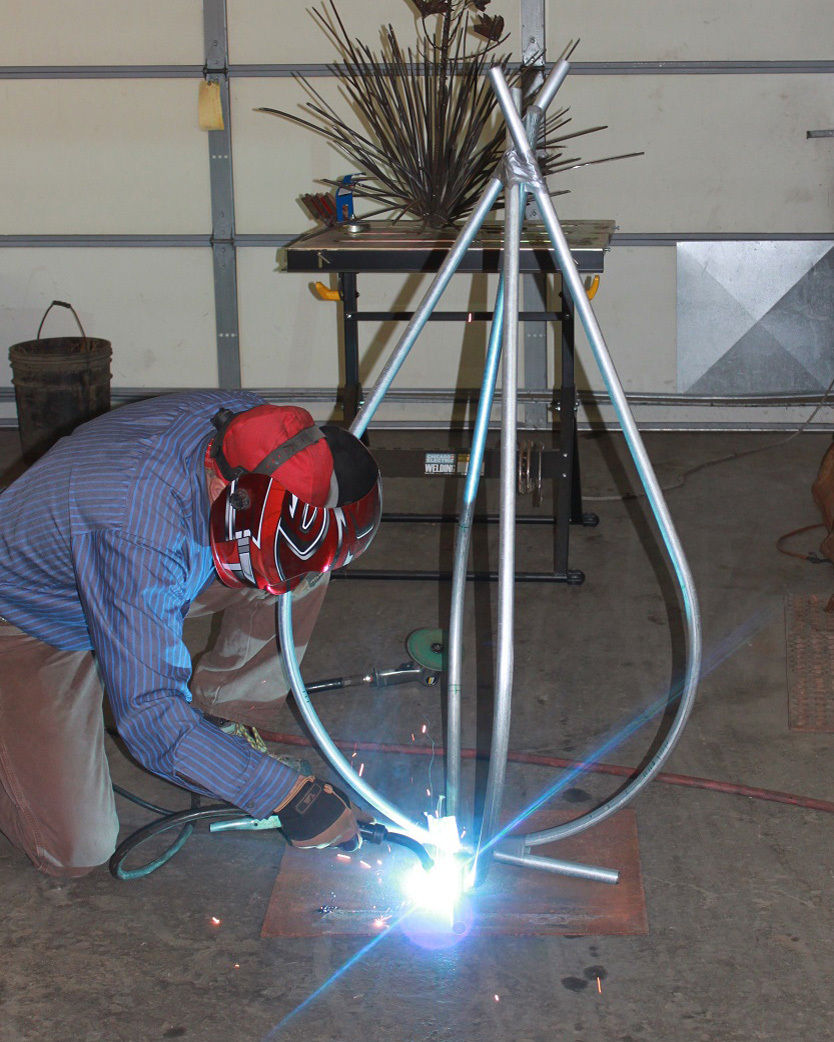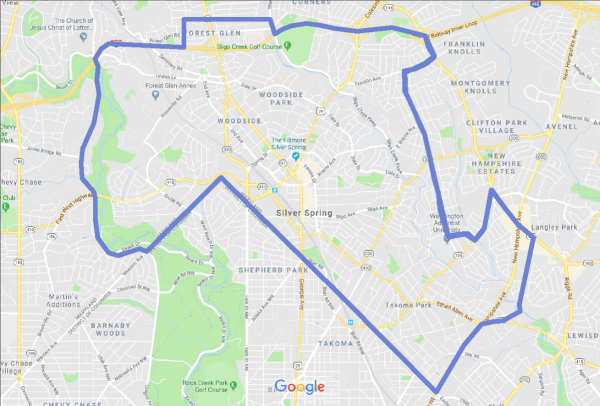What is Doris Day Parking? Start watching this clip at 0:59 to understand what Doris Day Parking is. Almost all, if not all, buildings in Kannapolis have Doris Day automobile parking. Before I start discussing the automobile and bicycle parking situations on the North Carolina Research Campus (NCRC), I need to mention that the NCRC is not fully built out yet. However, I feel this is not an excuse for the oversupply of automobile parking on the NCRC. Since there are many Transportation Demand Management (TDM) strategies that the City of Kannapolis and NCRC can pursue instead of adding more automobile parking, I believe there is already too much automobile parking for the fully built out NCRC. While there are TDM strategies being pursued, I believe the strategies aren’t strong enough. This is evident in how there is an oversupply of automobile parking, especially Doris Day automobile parking. Doris Day automobile parking continues to be built for every single building while only a few bike racks are being built. This is only one example of how weak the TDM strategies are in Kannapolis. My goal with writing this post is to discuss the extreme contrast between the oversupply of Doris Day automobile parking and undersupply of safe and convenient bicycle parking at UNC Chapel Hill’s Building on the NCRC.
I want to fully disclose that I graduated from UNC Charlotte, which competes with UNC Chapel Hill. The reason for writing this post does not involve this competition so please remember this as you read and comment on this post. As the below photo shows, the motorist was able to park only a few feet from the entrance to the building. Since Kannapolis provides so much Doris Day automobile parking, it encourages driving an automobile for every trip.

Doris Day automobile parking at the UNC Chapel Hill Building on the North Carolina Research Campus
Here is a closer view of the surface parking area. This is Doris Day Parking because the stairs to the building entrance, which can be seen on the right side of the photo, are only a few feet from the parking spaces so motorists only have to walk a few feet to enter the building. In case you are wondering, it is free to park here. Before the next photo is shown, notice the six story parking deck in the background.

Dorris Day Parking at the UNC Chapel Hill Building on the North Carolina Research Campus
Even though there are six stories, only the bottom two floors were partially used when I took the below photo around noon on a work day. Considering the fact that the NCRC isn’t fully built out yet, do you see the potential for all six floors being full someday?
I would prefer the NCRC pursue a different route. This route could reduce the likelihood of all six floors being used and prevent having the need to build another parking deck or surface lot on the NCRC. In order to achieve this route, the NCRC and City of Kannapolis would have to implement TDM strategies that encourage use of sustainable modes of transportation instead of encouraging the use of the automobile for every trip. Given the fact that Kannapolis is very dependent on the automobile, do you see the potential for Kannapolis to implement strong enough TDM strategies that would encourage enough people to shift from driving their automobile to using a sustainable mode of transportation?

6 story parking deck on the North Carolina Research Campus
Not only do motorists have a six story parking deck that is barely used, they also have wayfinding signage to direct them to the parking deck. While this wayfinding signage helps to reduce vehicle miles traveled (VMT) because motorists can more quickly find where to park, there is no wayfinding signage to help bicyclists find where to park their bike.

Wayfinding signage to direct motorists to the parking deck
Since I was determined to find where I was supposed to park my bicycle, which I struggled to park illegally to the sign below, I walked around the entire building. I struggled to park my bicycle because I had to lift it high enough for my U-lock to fit around the sign. While holding my bicycle high enough, I also had to maneuver the U-lock through the front wheel and frame. It took me at least a minute to lock my bicycle!

Location where I parked my bicycle
To my amazement, there was actually some bicycle parking located on the right side of the building and more located on the rear of the building. However, none of the bicycle parking was Dorris Day Parking like it was for automobile parking. I find it ironic that the UNC Chapel Hill Nutrition Research Institute, which is located inside this building, is researching how to “prevent or treat diseases like obesity, diabetes and cancer.” One simple and inexpensive way to work towards this goal is to install Dorris Day bicycle parking so people can feel encouraged to bike to the building instead of drive an automobile.

Bicycle parking at the UNC Chapel Hill Building on the North Carolina Research Campus
To make matters worse, the bicycle parking that has been provided is the same poorly designed and installed bicycle parking that was installed at Rowan-Cabarrus Community College’s NCRC Building. Even though UNC Chapel Hill and/or the NCRC probably received Leadership in Energy and Environmental Design (LEED) points for installing wheel bender bike racks, I cannot safely use the poorly designed wheel bender bike racks. As the below photo shows, the wheel bender bike rack is poorly designed because the person who owns the bike cannot lock the bike rack with the front wheel and frame using a U-lock. Instead, the person is forced to use a wire lock, which can easily be cut.
Unfortunately, the issue goes beyond the infrastructure that is installed. Education is also needed to educate cyclists on how to properly lock their bike. This issue can be seen in how the wire lock in the below photo was only locked to the frame and not to the frame and front wheel. Since the front wheel is quick release, the front wheel can easily be stolen so a U-lock needs to be used to lock the front wheel and frame to the bike rack. The wheel bender bike racks cannot reach the frame so a safer type of bike rack is needed.

Wire lock is only locked to the frame so front wheel, which is quick release, can be stolen
In addition, the wheel bender bike racks are poorly installed because the side entrance door to the building is locked so visitors have to walk around to the front of the building to enter. The poorly designed and installed bicycle parking does not promote bicycle use to the building. Since there isn’t correctly designed and installed bicycle parking, I am forced to risk getting a ticket for parking my bicycle illegally. I value the safety of my bike more than using an inferior product. Will UNC Chapel Hill or the NCRC install safe bike racks to replace the wheel bender bike racks?

Inconveniently located and poorly designed bicycle parking
The below photo shows one potential location for inverted U bike racks to be installed. I chose this location because it provides cyclists with convenient access to the front door, which is open for visitors. Through providing people with convenient bike parking, it encourages them to bike to the building instead of drive an automobile.

Location for Inverted U Bike Racks (Photoshop: Keihly Moore/Lawrence Group)
One way to encourage people to bike to the building even more is to provide covered bike racks so bikes aren’t exposed to the elements.

Location for Covered Inverted U Bike Racks (Photoshop: Keihly Moore/Lawrence Group)
I have discussed the extreme contrast between the oversupply of Doris Day automobile parking and undersupply of safe and convenient bicycle parking. Since I move to Silver Spring, MD on June 29, I only have time to write two more blog posts before I leave. My next post should be about my proposed redesign of a difficult bicycle connection between where the proposed buffered bike lanes on Loop Road end and the proposed bike lanes on Mooresville Road end. Following this post, I plan to discuss my expectations of living car-free in Silver Spring, MD and the Washington, DC region. After I arrive in Silver Spring, MD, I plan to discuss whether or not my expectations came true and what challenges and benefits I am experiencing from living car-free in Silver Spring, MD and the Washington, DC region.








































